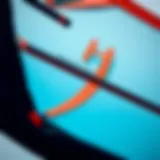Understanding Kitesurfing Equipment Costs: A Deep Dive


Intro
Kitesurfing has seen a surge in popularity over the years, transforming from a niche sport into a mainstream adventure for thrill-seekers. Whether you're standing at the water's edge, gazing at the waves or already soaring through the air, understanding the financial side of kitesurfing equipment can make a world of difference in your experience. This guide delves into the nuances of costs associated with kitesurfing gear, helping riders navigate the maze of options, from budget-friendly finds to high-end performance gear.
It’s crucial to grasp how various elements impact the overall expense of kitesurfing equipment. From kites and boards to harnesses and smaller accessories, each component plays a role in your investment. Riding the wind doesn't have to break the bank, especially not when you're equipped with the right knowledge. As we journey through this guide, expect to explore advantages of both new and second-hand markets, and learn how to spot the best value for your buck.
So, buckle up as we outline the factors that contribute to kitesurfing equipment costs and share valuable insights for both novice adventurers and seasoned veterans alike.
Prologue to Kitesurfing Equipment Costs
Understanding the costs associated with kitesurfing equipment is essential for anyone interested in this exhilarating sport. As with many adventure sports, the initial investment can sometimes feel overwhelming. Yet, discerning the equipment needed and its pricing can pave the way for a much more enjoyable experience on the water, preventing unexpected financial strain along the way. This section delves into why understanding these costs is so important.
Understanding the Essential Gear
Kitesurfing equipment typically involves a few core items: the kite itself, a board, and a harness. Each of these components has a range of prices based on various factors, including brand reputation, materials, and technology used in their construction. For instance, a high-performance kite designed for advanced maneuvers will likely be costlier compared to a beginner-friendly option. This variation in pricing can be substantial, sometimes shifting by hundreds of dollars.
Moreover, potential kitesurfers need to grasp that investing in essential gear is not just about the upfront cost but about long-term value. Poor quality equipment can lead to accidents or even injury, which can be much more costly in the grand scheme of things.
So, understanding what you need versus what’s nice to have is vital. The essential gear is your lifeline in kitesurfing. Choose wisely.
Importance of Investing in Quality Equipment
When it comes to kitesurfing, one could argue that the costs of the gear directly correlate with the performance you can achieve on the waves. Lower-priced items often cut corners on materials that can impact durability and reliability. Think of it as buying a bargain hunting knife versus a high-quality chef’s knife. One may serve the purpose, but the other will likely outlast any kitchen workload.
There’s a saying in kitesurfing circles that goes,
Components of Kitesurfing Equipment
When it comes to kitesurfing, understanding the various components of kitesurfing equipment is crucial. Each element plays a role not only in your performance but also in your overall enjoyment of the sport. The right gear can significantly impact your learning curve and safety, making it an important investment. Thus, delving into each component allows for informed decisions, ensuring that you receive the most value for your money.
The Kites: Varieties and Price Ranges
Kites are the heart of kitesurfing; they come in various shapes, sizes, and types. The primary categories include inflatable kites and bow kites, as well as hybrid options. Inflatable kites are popular for their stability and ease of use, while bow kites provide better upwind performance and are suitable for various wind conditions.
Price ranges for kites can vary widely:
- Entry-Level Kites: Starting around $300, these are typically basic models without advanced features. Ideal for beginners learning the ropes.
- Mid-Range Kites: Priced between $600 to $900, catering to intermediate riders who want durability and versatility.
- High-End Kites: These can go up to $1,800 or more, offering cutting-edge technology and performance for pros and enthusiasts.
Whether you’re a novice or seasoned rider, understanding these varieties is key to making a choice that aligns with your skill level and budget.
Selecting the Right Board: A Cost Perspective
The board is just as crucial as the kite itself. Kitesurfing boards are specialized for different styles, including freestyle, wave, and all-around riding. Generally, boards come in different materials—from budget-friendly options like foam to high-end carbon fiber.
When considering costs:
- Beginner Boards: Expect to pay from $250 to $500. They’re made for stability and ease of use, perfect for initial practice.
- Intermediate and Advanced Boards: Ranging from $600 to $1,200, these often feature advanced designs for improved performance in a variety of conditions.
Choosing the right board not only has financial implications but also affects your learning and performance on the water. Misjudging this selection might lead to higher expenses due to repeated purchases as skills develop.
Harnesses: Essentials for Comfort and Control
Don’t underestimate the significance of a good harness. It plays an integral role in transferring the kite’s pull onto your body. Comfort and fit are paramount as an ill-fitting harness can lead to discomfort and bad performance.
Harnesses come in two types: seat and waist. The latter is usually favored by more experienced riders as it offers a better range of motion. Prices usually range from $150 to $400 depending on features.
When investing in a harness, consider:
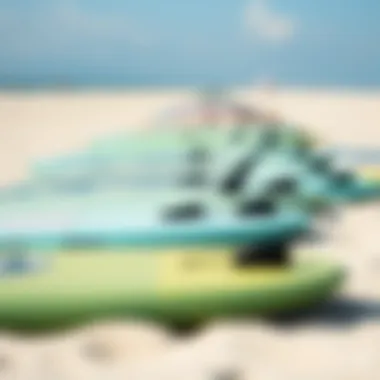
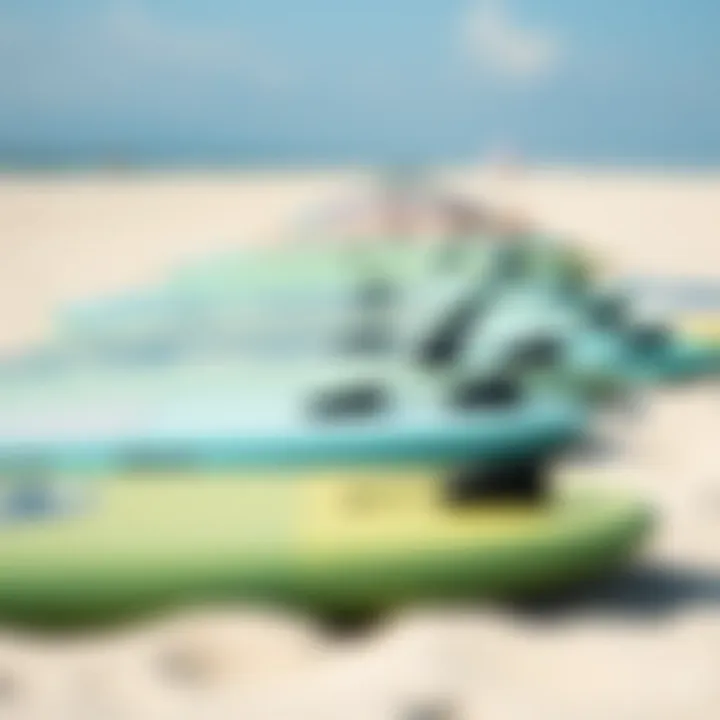
- Fit and comfort specific to your body type.
- Budget—don't go too cheap on something that affects your control.
- Additional features, such as padding or built-in hook settings that can enhance your experience.
Safety Gear: Understanding the Investment
Safety should never take a back seat in kitesurfing. Investing in proper safety gear is crucial for both new and seasoned riders. At the very least, you should acquire a helmet, impact vest, and a kite leash, as they offer essential protection and can save you during accidents.
These safety items can vary in price depending on the brand and technology used:
- Helmets: Usually cost between $50 and $150.
- Impact Vests: Prices can go from $100 to $250.
While it might seem tempting to skimp on safety gear, proper investment could potentially safeguard you against costly mishaps in the future, both financially and physically.
Additional Accessories: Evaluating Necessities
Beyond the primary gear, there are additional accessories that can enhance your kitesurfing experience. Think about the following:
- Kite Bags: Useful for travel and storage. Typically range from $50 to $150.
- Repair Kits: Essential for patching up a damaged kite. Usually around $20.
- Board Leashes: Prevents losing your board when you wipe out. Priced around $30.
While some might view these extras as mere luxury, practicality dictates that they can save you hassle and money in the long run. Each accessory fulfills specific needs, aligning with your style of kitesurfing.
Budgeting for Kitesurfing Setup
When diving into the thrilling world of kitesurfing, budgeting for your gear becomes a pivotal step. Figuring out your financial limits will guide you in selecting equipment that meets your needs without breaking the bank. Whether you are a first-timer or a seasoned wave-chaser, understanding the costs involved helps to make informed, practical decisions that enhance your experience on the water. Let’s break this down into two important areas: comparing entry-level gear with high-end products, and pinpointing any hidden costs that might catch you off guard.
Entry-Level vs. High-End Equipment Costs
Kitesurfing has a reputation for being an adrenaline-packed sport, but the costs can vary significantly depending on your choice of gear. Entry-level equipment is generally more affordable, making it an attractive option for beginners. Prices for a complete starter package—which often includes a kite, board, and harness—can range from $800 to $1,200. This package often includes functional yet basic equipment aimed at getting you up and riding quickly without an arm and a leg.
On the flip side, high-end gear can easily set you back anywhere from $1,500 to $3,000 or more. Premium brands offer advanced features, better materials, and the latest technology, potentially improving your performance and durability on the waves. For instance, a high-performance kite crafted from lightweight ripstop material with enhanced aerodynamics might deliver better lift and control, giving you a distinct edge, especially as you progress.
"Choosing the right level of equipment can make a significant difference in comfort and effectiveness, especially for those still mastering the basics."
When weighing your options, keep in mind that many riders end up upgrading sooner rather than later. Going high-end right from the start might be tempting, but if you’re still working on your fundamentals, a decent entry-level option might serve you just as well.
Identifying Hidden Costs in Kitesurfing
Besides the upfront cash for your gear, kitesurfing can carry several hidden costs. It's crucial to look beyond the price tags of your equipment. Here are a few potential expenses to consider:
- Maintenance: Equipment needs care. Regular checks and minor repairs can be an added cost. Kite bladders may need replacements, or boards might require repairs after spills.
- Travel Expenses: If the best kitesurfing spots are far from home, travel expenses can add up quickly. Fuel, accommodation, and food should all be factored into your overall budget.
- Insurance: If you’re serious about kitesurfing, consider insuring your gear against theft or damages. The cost of this varies, but it’s often worth it for peace of mind.
- Lessons: Investing in professional lessons can greatly improve your skills, particularly if you’re just starting out. Prices for lessons can vary based on location and instructor, usually averaging around $100 to $150 per session.
By piecing together a comprehensive budget that encapsulates all these factors, you’ll be well-equipped to venture into kitesurfing with confidence and foresight. This proactive approach not only saves you money in the long run but enriches the overall experience, allowing you to focus less on finances and more on the thrill of the ride.
The Second-Hand Market for Kitesurfing Equipment
The realm of kitesurfing can be exhilarating yet financially demanding, particularly when it comes to purchasing top-tier equipment. Understanding the second-hand market stands as a beacon for those looking to cut costs without sacrificing quality. This section dives into the intricacies of buying used gear, illuminating the advantages and potential pitfalls involved.
Risks and Rewards of Buying Used Gear
When stepping into the second-hand realm, there are both rewards and risks to weigh. First, let’s discuss the perks. Buying used gear can lead to significant savings. For instance, a nearly new kite that initially sold for $1,500 might be available for just $800. Such deals can allow new kitesurfers to get their feet wet without plunging into deep waters financially.
On the flip side, there are obvious risks. Used kitesurfing equipment often lacks a warranty or the same assurance of quality as new gear. Potential red flags include:
- Signs of wear and tear, like frayed lines or damaged bladders.
- Outdated technology that may not work efficiently, affecting performance.
- Misleading advertisements that don’t accurately represent the product’s condition.
When buying second-hand, always ensure you assess each piece with a discerning eye.
“Good deals are made, not found. Always do your homework.”

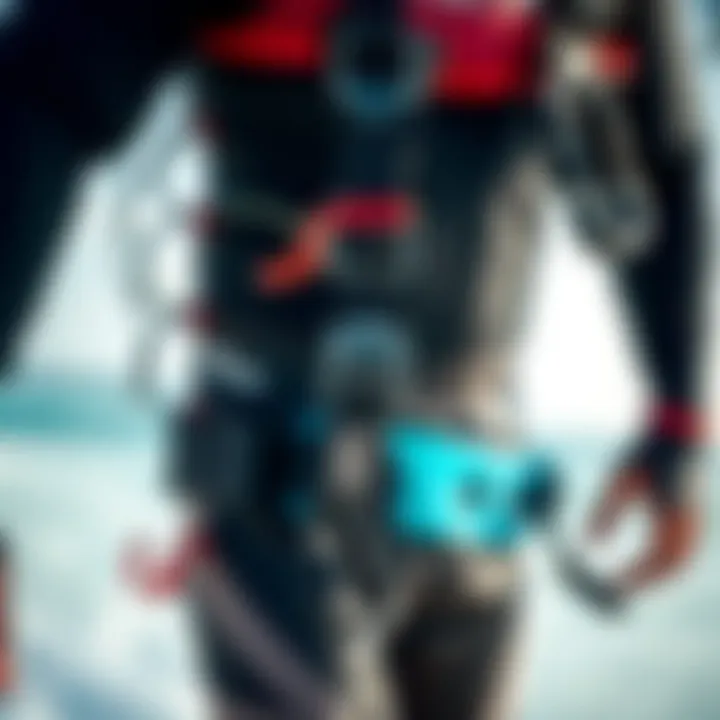
How to Evaluate Second-Hand Equipment
To avoid the pitfalls of second-hand purchases, one must be adept at evaluating equipment meticulously. Start with these steps:
- Inspect for Damage: Look for physical damage, such as punctures in the kite or delaminating boards. Any visible flaws can affect performance and safety.
- Check the Age: Determine when the equipment was manufactured. Sometimes, older gear may be significantly discounted, but could also pose safety concerns or lack modern features.
- Research the Seller: Buy from reputable sources. Online marketplaces like eBay, specialized kitesurfing forums, or local shops may have experience in evaluating and selling used gear, enhancing reliability.
- Ask About the History: A seller’s transparency about previous use, maintenance, or repairs can provide insight into the item's longevity.
- Test It Out if Possible: If you can, it’s ideal to test the gear before buying. Feel the handling, perform some maneuvers, and ensure it's comfortable for your level.
Engaging in this thorough examination can mean the difference between a savvy investment and a financial misstep.
By diving into the second-hand market mindfully, kiteboarders can piece together a setup that aligns with their budgets while still being set for thrilling adventures on the water.
Cost Considerations for Beginners
When newcomers to kitesurfing contemplate their first purchase, understanding cost considerations becomes crucial for cultivating a rewarding experience. The kitesurfing scene can feel a bit labyrinthine, especially with a myriad of choices that cater to different budgets and skill levels. By navigating the terrain of initial investments wisely, beginners can acquire quality gear without breaking the bank, ensuring that they can enjoy their newfound passion without financial strain.
Starter Packages and Their Value
Starter packages serve as a treasure trove for those just setting foot in the kitesurfing world. Typically, these packages bundle essential gear, like kites, boards, and harnesses, and sometimes include instructional materials or support from local schools. The appeal lies in the convenience and often lower price point compared to buying each item separately.
- Affordability: Buying a starter package can save money; options are generally designed with beginners in mind, ensuring they don't over-invest on equipment that they might not use often.
- Compatibility: The components in these packages are often thoughtfully paired. For instance, a kite size that matches a beginner's weight is selected, reducing the likelihood of frustration during those first attempts.
- User-Friendly: Many manufacturers produce starter packages that include simplified equipment, making it easier for newcomers to grasp the basics, such as safety features and how to launch properly.
However, not all starter packages are created equal. Potential buyers should take stock of the brands involved; some might offer better long-term durability or performance than others. Researching online or consulting experienced kitesurfers on platforms like Reddit can shed light on what packages suit beginners best. The ultimate aim is for new kitesurfers to find a package that provides both essential support and a solid introduction to the sport.
Renting vs. Buying: Weighing the Options
The debate over whether to rent or buy kitesurfing equipment is a common one, particularly for beginners. Each avenue carries its own set of advantages and potential drawbacks.
Renting: Renting can be an enticing option for those unsure about their commitment to kitesurfing. It allows individuals to try out different styles and brands without the financial commitment of purchasing gear outright.
- Flexibility: Renters can use different equipment suited for varying conditions. This adaptability can be beneficial since kitesurfing conditions vary widely across different weather scenarios.
- Lower Initial Cost: Renting can eliminate the substantial upfront costs associated with purchasing gear. For some, this might mean being able to afford lessons or access to premium equipment without the financial burden.
However, renting can also come with its disadvantages:
- Long-Term Costs: Frequent rentals may prove to be more expensive over time compared to buying a quality setup.
- Limited Availability: Some locations may not have the latest gear available for rent, which can hinder performance and learning.
Buying: On the other hand, purchasing kitesurfing gear can be seen as a long-term investment. Owning gear often leads to a more personalized experience since riders can choose equipment based on their unique preferences.
- Consistency: Familiarity with one’s own gear can lead to improved performance and greater confidence on the water.
- Potential Savings: After enough use, owning equipment can be significantly cheaper than renting, particularly for those who kite frequently.
Ultimately, the decision between renting and buying often hinges on how often a person anticipates kitesurfing. A good rule of thumb is to assess personal interest levels and budget while keeping in mind that many local shops and instructors can provide invaluable insights based on individual needs.
"Invest in your passion wisely, whether through renting or owning; the right decision can set the stage for growth in kitesurfing."
By weighing these various aspects carefully, beginners can better navigate their entry into kitesurfing, ensuring they are equipped to embrace the sport with both enthusiasm and financial sensibility.
Impact of Brand Reputation on Pricing
When it comes to kitesurfing equipment costs, brand reputation plays a pivotal role. It not only signifies the quality of the gear but also influences the overall pricing structure in the marketplace. Understanding this relationship helps consumers make informed decisions. If one goes for a premium brand, they might pay a bit more upfront, yet, the long-term advantages often outweigh that initial investment.
A reputable brand typically invests heavily in research and development. This leads to innovative designs, enhanced safety features, and improved performance characteristics. For instance, brands like Duotone and Slingshot have built a reputation for creating durable kites that perform exceptionally well under various ocean conditions. When someone opts for these familiar names, they can be confident they are getting reliable support.
Identifying Leading Brands in Kitesurfing
There are numerous brands vying for attention in the kitesurfing scene, each claiming to offer the best gear. However, a few names rise above the rest due to consistent quality and innovation. Notable leaders include:
- Naish: Known for its premium kites that cater to both beginners and seasoned pros. The brand's longevity in the sport speaks volumes about its reliability.
- North Kiteboarding: With roots stretching back to the early 2000s, North consistently delivers top-notch equipment that meets the needs of diverse riders.
- Flysurfer: Recognized for its high-performance foil kites, Flysurfer often captivates advanced kitesurfers looking for speed and agility on the water.
These brands have established a loyal customer base for a reason. They not only produce gear that stands the test of time but also support riders through sponsorships and events.
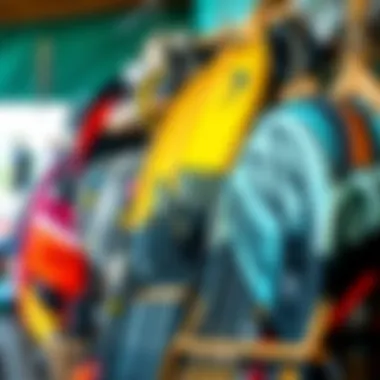

The Relationship Between Brand and Cost
Delving into how brand reputation correlates with costs, one must recognize that higher prices often correlate to various factors: the materials used, the technology behind the equipment, and overall manufacturing standards. Cheaper brands may cut corners, potentially sacrificing safety or performance for a better price point.
When considering expenses involved in kitesurfing gear, it’s essential to weigh the long-term costs against the purchase price. For instance, a kite from a well-known brand may come with a price tag that is twice as high. Nonetheless, its longevity and resale value can make it a wiser choice in the long run.
Here are a few factors reflecting brand costs on pricing:
- Materials: Premium brands use higher quality materials which may result in increased costs but often lead to enhanced durability.
- R&D and Innovations: Leading brands invest heavily in research and development to create cutting-edge equipment. Such innovation tends to reflect in pricing.
- Customer Support: Well-established brands usually offer superior customer service, ensuring that any issues are addressed promptly and effectively.
“In kitesurfing, the saying goes: Buy cheap, buy twice. Investing in reputable brands can save one from frequent replacements and ensures a better experience overall.”
Navigating the world of kitesurfing equipment requires understanding these dynamics. Recognizing how brand reputation impacts pricing ensures that individuals make informed decisions that align with their budget and kiting goals.
Long-Term Investment Benefits
When delving into the world of kitesurfing, it’s vital to recognize that the costs of equipment extend well beyond the initial purchase price. Investing in quality gear may seem steep at the outset, but it often translates into savings down the line through reduced maintenance and increased longevity. So, let’s break it down and see what this long-term commitment means for the savvy kiteboarder.
Cost of Maintenance and Repairs
Kitesurfing equipment, like any specialized gear, requires upkeep to maintain peak performance. Factors such as exposure to saltwater, UV rays, and the wear and tear of regular use become significant in the long run. Here are some key points to consider regarding maintenance and repair costs:
- Regular Inspections: It’s essential to check your gear frequently, especially after heavy usage. Look for punctures, frayed lines, or loose connections. Small issues can snowball into larger, pricier problems if left unattended.
- Replacement Costs: Eventually, some components may need individual replacement, such as lines or struts in the kite. Opting for a durable brand often means these replacements are less frequent and offer more reliable performance.
- Service Knowledge: Knowing how to repair your gear can be a game-changer. Many kitesurfers learn basic repairs over time—stringing lines or patching kites can save you significant amounts on professional services.
In short, while the initial investment may be higher for quality kites and boards, the reduced maintenance and repair needs often justify the costs over several seasons.
Upgrading Equipment: When and Why
Every kiteboarder comes to a crossroads regarding upgrades—sometimes, it’s due to performance, and at other times, it’s about replacing worn-out gear. Knowing when to take that leap into newer equipment is essential. Here are factors to ponder:
- Skill Development: As you progress in your kitesurfing skill level, your needs may change. An entry-level board might suffice when starting out, but a more advanced setup could greatly enhance your experience and confidence in the water.
- Performance Requirements: Noticeable improvements in board construction, kite efficiency, or harness comfort occur frequently in the market. Upgrading gear not only improves your ride but can also help foster new skills.
- Trends and Styles: Just as with any sport, trends can shift. New designs may come out that cater to specific kitesurfing styles, ensuring that you’re equipped for the latest conditions.
If you find yourself struggling with older gear or sensing that you’ve outgrown it, softly nudging your budget to accommodate an upgrade could prove advantageous in the long run.
"Investing in good equipment is not merely about performance today; it translates into longevity and happiness for years of kitesurfing ahead."
Ultimately, informed decisions will set you apart as a kiteboarder focused on both performance and investment.
Culmination: Making Informed Purchasing Decisions
When it comes to kitesurfing, buying the right equipment isn't just about selecting a shiny kite or a trendy board. It’s a crucial investment that reflects your commitment to the sport and influences your overall experience on the water. The costs associated with kitesurfing gear can run the gamut from budget-friendly options to high-end professional equipment, each choice bringing its own set of benefits and challenges.
In this article, we’ve discussed various facets of kitesurfing equipment costs, from understanding essential gear to diving into both new and second-hand markets. By becoming familiar with these aspects, you’ll be better positioned to make informed decisions that align with your personal goals and financial capacity.
Summarizing Key Cost Factors
There are several key factors worth highlighting when making your purchasing decisions:
- Quality Over Quantity: Investing in durable, high-quality gear is often wiser than opting for a lower price tag. Quality equipment can enhance performance and last longer, saving you money in the long run.
- Hidden Costs: Always consider maintenance and repair costs as part of your budget. Equipment might look flashy, but if it’s prone to damage, those hidden costs can rack up over time.
- Brand Reputation: Sometimes, the name on the gear can dictate the price. Well-regarded brands often command higher prices, but they can also offer reliability and better performance.
- Type of Equipment: Different types of kites and boards come at various price points. For instance, specialized boards for freeriding may cost more than a basic one for casual use.
"Not all that glitters is gold. Sometimes, that cheap kite might not be the best deal after all."
Recognizing these factors can arm you with a keen sense of the market, guiding you to make choices that not only suit your budget but also garner the confidence that you’re equipped with the tools you need to thrive.
Final Thoughts on Budget Management
Approaching your kitesurfing expenditures with a strategic mindset is essential, especially for new riders. Here are some principles to keep in mind:
- Set a Budget: Always establish a clear budget before diving into purchases. This will help you avoid the allure of impulse buys fueled by flashy marketing.
- Research Prices: Don't just take the first price you see as the final word. Comparing costs across different retailers can lead to significant savings.
- Consider Seasonal Offers: Often, end-of-season sales can snag you high-quality gear at a fraction of the cost. Don't be afraid to wait for the right moment!
- Evaluate Your Needs: Are you a weekend warrior or a dedicated pro? Understanding your commitment will guide you toward making wisely tailored choices that won’t break the bank.
In summary, making informed purchasing decisions is about preparation and awareness. The landscape of kitesurfing equipment costs can appear turbulent, but with the right information and values in hand, you can navigate it successfully.
Additional resources:




